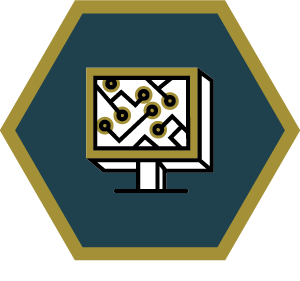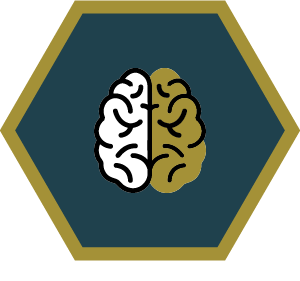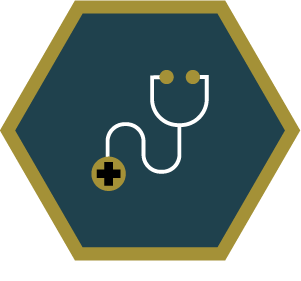Harnessing the power of artificial intelligence
UofSC researchers explore AI-based solutions to a wide range of challenges
Posted on: July 12, 2022; Updated on: July 12, 2022
On an early visit to the University of South Carolina, Amit Sheth was surprised when 10 deans showed up for a meeting with him about artificial intelligence.
Sheth — the incoming director of the university’s Artificial Intelligence Institute at the time — thought he would need to sell the deans on the idea. Instead, it was them pitching the importance of artificial intelligence to him.
“All of them were telling me why they are interested in AI, rather than me telling them why they should be interested in AI,” Sheth said in a 2020 interview with the university’s Breakthrough research magazine. “The awareness of AI was already there and the desire to incorporate AI into the activities that their faculty and students do was already on the campus.”
Since the university announced the institute in 2019, that interest has only grown. There are now dozens of researchers throughout campus exploring how artificial intelligence and machine learning can be used to advance fields from health care and education to manufacturing and transportation. On Oct. 6, faculty will gather at the Darla Moore School of Business for a panel discussion on artificial intelligence led by Julius Fridriksson, vice president for research.
South Carolina's efforts stand out in several ways: the collaborative nature of research, which involves researchers from many different colleges and schools; a commitment to harnessing the power of AI in an ethical way; and the university's commitment to projects that will have a direct, real-world impact.
This week, as the Southeastern Conference marks AI in the SEC Day, we look at some of the remarkable efforts of South Carolina researchers in the area of artificial intelligence.
Could artificial intelligence help the visually impaired? Pooyan Jamshidi hopes so. The assistant professor of computer science and engineering is working to develop assistive technology that would help the visually impaired interpret their surroundings.
Close your eyes and think about all the sights and sounds that surround you — your laptop, your desk, the whir of the air conditioner, the music coming from your co-worker’s radio; or, if you’re outside, the birds in a tree, the sound of a truck driving past, the murmur of conversation on the Horseshoe. Now, imagine these sights and sounds being described to you by a computerized voice in real time. In an instant, you become more independent because your surroundings, once shrouded in darkness, are illuminated by the power of technology.
The complexity of the project is enormous, but Jamshidi says the effort is worth it.
“I have always aspired to align my research toward ‘AI for social good,’ a research
that makes a difference for our society and hopefully makes a real impact beyond publications,”
Jamshidi says.
What if you sent a probe to Mars but no one could interpret the data that its sensors were sending back? How can you protect a structure against a threat that it has never encountered? These are the types of challenges that Sourav Banerjee thrives on.
Banerjee is an expert in nondestructive evaluation and structural health monitoring in the fields of aerospace and civil and mechanical engineering. And the answer to both questions is: Build a digital twin, a virtual representation of an object or system that uses simulation, machine learning and reasoning. That twin lets researchers test a full range of scenarios in order to improve the performance of real-world objects and systems. Banerjee works with NASA and the U.S. Navy on technology that employs digital twins and artificial intelligence, and he’s long championed the benefits of digital twins.
“I’m very excited because I’ve been working in this area for quite some time and some
of the ideas and concepts I’m developing have been accepted by some agencies,” Banerjee
says. “Digital twins are almost everywhere, and our philosophy and concept were developed
as a long-term program.”
University of South Carolina researcher Homay Valafar and AI director Amit Sheth have a simple goal: Use emerging technologies to improve America’s health care system so people receive care tailored to their bodies’ needs and their individual genetic make-ups.
The emerging field of personalized health can apply AI in all sorts of ways to find safer, more effective personal treatment. That could mean helping elderly people receive treatment that incorporates their childhood medical history, or informing children of the diseases they are most susceptible to and giving guidance to combat their vulnerabilities.
“Care will be sooner, it will be faster, and it will be far better for you,” Valafar
says. “You are not going to be subjected to unnecessary medication. You're not going
to be subjected to unnecessary treatment. And there’s going to be early treatment
of things that wouldn’t have previously been caught, leading to early intervention
rather than retroactive care.”
There is little question that people’s social and mental well-being was affected by the COVID-19 pandemic. But learning the extent of that impact involved turning to big data. At the University of South Carolina’s AI Institute, more than 700 million social media posts and 700,000 news articles about COVID-19 were processed in the first months of the pandemic.
AI Institute director Amit Sheth and a team of researchers examined the data using automated text analysis that not only searched for certain keywords, but also tracked the meaning of words so as to filter for relevant results. What they found were strong warning signs in the areas of depression, anxiety, substance abuse, gender-based violence and addiction.
“Monitoring the vast flow of words in news and social media can provide insights much
faster than traditional survey measures,” Sheth wrote in The Conversation. “Our analysis
provides a foundation for developing social indicators and alarms that will help policymakers
more quickly detect and more effectively prepare for emerging threats.”
Sitting at a railroad crossing is more than just inconvenient for drivers; it can be dangerous if a first-responder vehicle is stuck in train traffic on its way to an emergency. Yu Qian, a civil engineering professor, is using artificial intelligence to try to build safer transportation systems
“We surveyed responders to identify several locations where the problem most often occurs in the Columbia area,” Qian says. “Then we developed a system that uses computer vision to monitor street traffic conditions and got operational information from the railroads to better estimate train crossing times and potential delays.”
Those estimates can help 911 dispatchers choose better routes for vehicles responding
to an emergency call. He’s also working to improve safety at railway crossings and
along tracks, using computer vision and drones to develop an autonomous track inspection
system.
The School of Medicine Columbia is the international leader in ultrasound education, incorporating the hand-held portable machines in the curriculum for all medical students.
Dr. Richard Hoppmann, director of the university’s Ultrasound Institute and dean emeritus, believes a new cardiothoracic assessment tool that combines the functions of a stethoscope, EKG and ultrasound, all tied together with artificial intelligence, will change the way medicine is taught and practiced.
“As individuals, we simply cannot outperform artificial intelligence,” Hoppmann says.
“Medical knowledge has expanded so much there’s no way to know everything. You cannot keep
up with the literature, because the literature has been growing exponentially. And
there is also the matter of the processing power of computers and deep learning. We
cannot process large amounts of information as quickly and accurately as today’s computers
and AI.”





